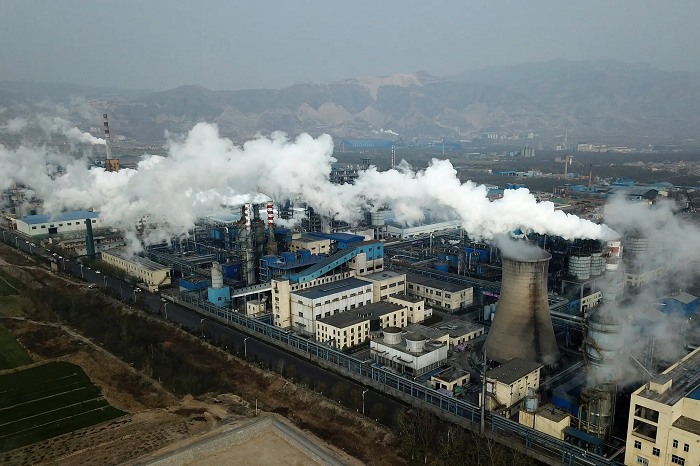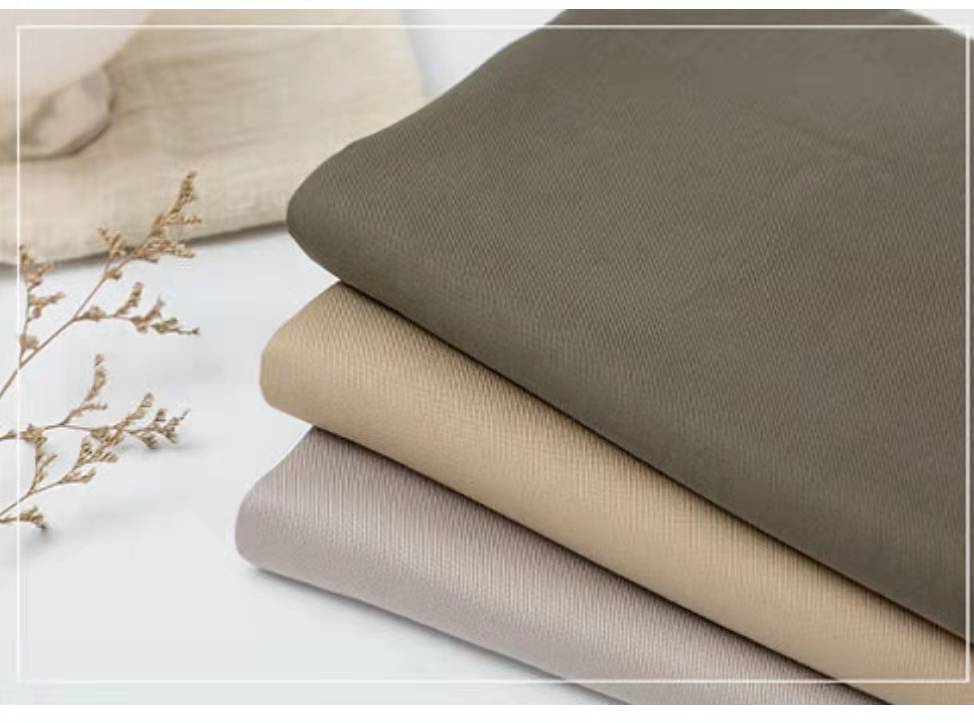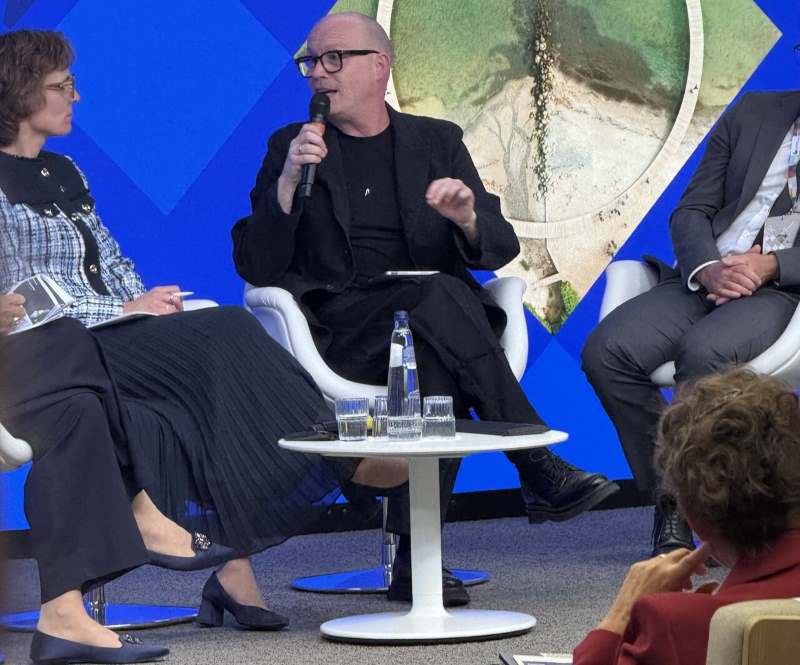FW

The imposition of an additional 100% tariff on all Chinese goods by President Donald Trump—a move that underscores the fickleness and high-stakes nature of recent U.S. trade policy—has triggered a seismic shift in the global textile and apparel industry. This sudden, massive hike, effective from November 1, 2025, or sooner, effectively raises the total tariff on Chinese goods to over 130%. For a global textile trade that relies heavily on China’s scale and efficiency, this action instantly renders the world’s largest supplier uncompetitive in the critical U.S. market, creating a void of tens of billions of dollars and launching a high-stakes competition among every major textile-exporting nation to absorb the redirected U.S. demand.
The total U.S. textile and apparel import market from China, which once topped $45 billion annually, is now a massive opportunity. The benefits will not be distributed evenly; they will flow primarily to the countries offering the greatest trade stability, cost advantage, and production scale.
Productwise Information: What is "For Grabs"
The products most "for grabs" are those where China had a large market share and has been hit with the steepest tariff increases. This market shift is already well underway, with China's market share in U.S. apparel imports falling to just 15.6% in value by July 2025 (down from 24.6% a year prior). The shift is most pronounced in apparel and home textiles, where China's exports are now subject to immediate, prohibitive cost increases.
Data Table: Top US Apparel Imports from China Facing Prohibitive Tariffs
The table below highlights specific high-volume apparel products (by HS Code) that were major U.S. imports from China in 2024 and are subject to massive, multiple-hundred-percent tariff hikes, indicating the magnitude of the market share that is now shifting.
|
Product Category (HS Code) |
Total US Imports (2024 Value) |
China's Contribution (2024 Value) |
Tariff Increase on China (Example) |
Primary Beneficiary Countries |
|
Cotton Pullovers/Cardigans (HS 611020) |
$7.41 Billion |
$1.04 Billion |
~1,263% |
Vietnam, Cambodia, Bangladesh |
|
Man-Made Fibre Pullovers (HS 611030) |
$4.84 Billion |
$0.99 Billion |
~916% |
Vietnam, Honduras, Indonesia |
|
Women's Cotton Trousers/Shorts (HS 620462) |
$4.01 Billion |
$0.67 Billion |
~1,606% |
Bangladesh, Vietnam, Pakistan |
|
Brassieres (HS 621210) |
$2.12 Billion |
$0.58 Billion |
~1,311% |
Vietnam, Indonesia, Sri Lanka |
|
Hosiery (HS 611596) |
$1.53 Billion |
$1.10 Billion |
~849% |
Vietnam, Pakistan, El Salvador |
|
Synthetic Fibre Dresses (HS 620443) |
$1.13 Billion |
$0.51 Billion |
~1,115% |
Vietnam, India, Indonesia |
The Winners & High Risk contenders
|
Country/Group |
Category |
Core Competitive Edge |
Primary Product Advantage |
U.S. Tariff Status (Approx. Rate) |
Key Constraint/Risk Factor |
|
Vietnam |
Winner (Leader) |
Strong compliance, existing large scale, and high-quality reputation. |
Certain Apparel categories (already surpassed China in some U.S. value), higher-value items. |
Low & Stable (≈20%) |
Heavy reliance on imported raw materials (fabrics/yarns, often from China). |
|
Bangladesh |
Winner (Volume) |
Lowest labor costs in Asia, massive volume capacity for cut-and-sew. |
Large-volume Ready-Made Garments (RMG), cotton basics (T-shirts, sweaters). |
Low & Stable (≈20%) |
High reliance on imported fabric; infrastructure bottlenecks, social compliance concerns. |
|
India |
High-Risk Contender |
Complete, integrated value chain (farm-to-garment) for cotton. |
Home Textiles (bedding, towels), Cotton Apparel. |
High (≈50%) |
Currently subject to high, separate U.S. tariffs, drastically reducing price competitiveness versus Vietnam/Bangladesh. |
|
Pakistan |
High-Potential Contender |
Vertically integrated cotton-to-garment sector, specialized expertise. |
High-quality Denim, Woven Cotton Products. |
Low/Moderate (≈20%) |
Geopolitical instability, persistent labor compliance concerns, unreliable power supply. |
|
Indonesia |
Niche/Diversifier |
Capacity for more complex, higher-value manufacturing. |
Outdoor Apparel, Athletic Wear, complex garments. |
Low/Moderate (≈20%) |
Higher labor costs compared to Vietnam/Bangladesh, infrastructure limitations. |
|
Cambodia |
Niche/Diversifier |
Strong focus on social compliance and ethical sourcing. |
Sustainability-focused apparel, small-to-mid volume orders. |
Low/Moderate (≈20%) |
Smaller production scale; pressure on labor rights and infrastructure. |
The Winners: Stable and cost-competitive alternatives
The primary beneficiaries are the countries that have already proven capable of handling large-volume U.S. orders and, crucially, enjoy significantly lower U.S. tariff rates.
1. Vietnam: The fastest-growing leader
● Competitive edge: Vietnam is widely seen as the biggest immediate winner. It has already surpassed China in certain apparel import categories to the U.S. Its textile and garment industry is robust and benefits from a strong reputation for compliance and quality.
● The advantage: Vietnam's exports to the U.S. generally face a much lower, more stable tariff rate compared to the prohibitive new rate on China (130%+). This cost disparity guarantees market share.
● Challenge: Vietnam's industry still relies on imported raw materials (especially fabrics and yarns, often from China), which increases lead times and reduces the national value-add for full-package orders.
2. Bangladesh: The volume powerhouse
● Competitive edge: Bangladesh is the world's second-largest apparel exporter, specializing in large, low-cost Ready-Made Garment (RMG) orders, particularly cotton basics. Its competitive advantage is driven by the lowest labor costs in Asia.
● The advantage: Like Vietnam, Bangladesh enjoys a low U.S. tariff rate, making its finished goods far cheaper than Chinese alternatives. Orders for bulk items (T-shirts, sweaters, undergarments) are expected to surge here.
● Challenge: The industry is heavily reliant on imported fabric (often from India, China, or Vietnam) for most of its production. Infrastructure bottlenecks, social compliance concerns, and a less diversified product range (focus on knitwear) limit its ability to capture high-end or specialty textile business.
The ‘High-Potential’, ‘High-Risk’ contenders
These countries possess the capability but face distinct headwinds that may limit their immediate absorption of Chinese market share.
3. India: The vertical integration hurdle
● Competitive edge: India is the only country with a complete, integrated value chain from cotton farming to finished garments, making it a strong competitor for Home Textiles (bedding, towels) and Cotton Apparel. Indian textile exports to the U.S. have been growing steadily.
● The challenge (The Trump volatility impact): Despite the huge opportunity, India's ability to capitalize is severely constrained by existing U.S. tariffs on its goods (imposed in a separate trade dispute context). While 50% is better than 130%+, it is drastically higher than the 20% tariff faced by Vietnam and Bangladesh, causing Indian exporters to already report order diversion to competitors. The fickle nature of the current U.S. administration's tariff policy signals India’s stable trade position with the U.S. is currently in doubt.
4. Pakistan: Cotton and denim niche
● Competitive edge: Pakistan has a highly competitive, vertically integrated cotton-to-garment sector, with a global reputation for high-quality denim and woven cotton products. It is a natural fit for complex cotton-based apparel shifting out of China.
● Challenge: Geopolitical instability and persistent concerns over labor compliance and power supply represent major risk factors for U.S. buyers seeking stable, long-term supply chain partners.
5. ASEAN Countries (Indonesia, Cambodia): Niche and diversification
● Competitive edge: Indonesia specializes in higher-value, more complex garments like outdoor apparel and athletic wear. Cambodia, while smaller, is noted for its focus on social compliance, making it attractive to sustainability-focused U.S. brands.
● Challenge: Indonesia is a higher-cost source compared to its peers. Both countries face pressure on labor rights and infrastructure, but their tariff rates are generally more favourable than India’s current rate.
The Loser (Other than China): The U.S. consumer
The ultimate, unavoidable consequence of this tariff escalation is the cost burden shifting directly to the American consumer and retailer.
● Massive inflationary pressure: An effective 130%+ tariff on Chinese textiles—which make up nearly $40 billion in U.S. imports—will either be absorbed by U.S. brands through major profit cuts, or, more likely, passed on as significantly higher retail prices for everything from basic T-shirts and jeans to home furnishings.
● Supply chain shock: The abruptness of the 100% hike creates panic. U.S. buyers need immediate alternatives for the upcoming seasons, forcing a disorderly and expensive relocation of production that few substitute countries can match in terms of scale and speed.
● Uncertainty and instability: The fickle nature of the U.S. policy decision—the willingness to impose a blanket 100% tariff overnight—signals extreme unpredictability. Global sourcing managers are now not just looking for lower costs, but for political stability, making them wary of relying too heavily on any single non-China destination, especially one (like India) already subject to its own significant, separate U.S. duties.
The global textile industry is braced for a turbulent six months. While Vietnam and Bangladesh are poised to capture the lion's share of the redirected orders due to their existing low-tariff access, the underlying volatility of U.S. trade policy guarantees that this market shift will be characterized by chaos, rising costs, and a frantic search for reliable, long-term non-Chinese partnerships.

The announcement by President Donald Trump to impose an additional 100% tariff on all Chinese goods, on top of existing duties, marks a significant escalation in the U.S.-China trade war. This dramatic policy shift, characteristic of the President's recent history of abrupt and high-stakes trade decisions, injects extreme volatility and unpredictability into global supply chains. This most recent move, primarily in response to China's new export controls on rare earth materials, is set to take effect from November 1, 2025, or sooner. For the global textile and apparel industry, which relies heavily on China as a major supplier, this tariff—effectively raising total duties on Chinese goods to over 130% —presents both a colossal supply chain disruption and a massive potential export opportunity for alternative countries, including India.
Should India view this as a stable opportunity?
While the tariff threat immediately positions India as a potential beneficiary in the short term, the opportunity is not stable and is fraught with significant competitive and geopolitical risks.
The Double-Edged sword for India
1. Immediate advantage (The silver lining): The sheer increase in the cost of Chinese textiles and apparel in the U.S. market will render them virtually uncompetitive. This price disparity creates a massive vacuum that U.S. buyers must fill. Indian exporters are reportedly already seeing an "upper edge" and "huge export opportunities"
2. The Competitiveness hurdle (The major risk): India's own textile and apparel sector is already facing a major headwind: U.S. tariffs of 50% on Indian goods, a rate much higher than competitors like Bangladesh and Vietnam, which face tariffs around 20%.
○ This 50% tariff (imposed in a separate development concerning Russia oil purchases) severely undercuts India’s cost advantage, leading to drastic order reductions and factory shutdowns in key hubs like Tiruppur
○ Exporters are offering steep discounts (20-25%) to retain U.S. buyers, effectively exporting at a loss to cover the high duty.
A door opens, but a wall remains
The new 100% tariff on Chinese goods may appear to open a lucrative door for India — but its own 50% tariff acts as a wall. While U.S. brands seek to de-risk their supply chains from China, they are turning toward countries with lower duties and greater trade predictability. As one industry voice put it, “Now this 100% additional tariff on Chinese goods will give us an upper edge... but the 50% tariff has dealt a severe setback to India’s industry. Some exporters are relocating their operations to Vietnam and Bangladesh, where tariffs are significantly lower, at around 20%.” Unless a swift U.S.-India trade deal reduces this barrier, India risks watching opportunity flow past its borders—straight to more tariff-friendly rivals.
The Basket Up for Grabs: Product-wise analysis
China remains the dominant, albeit declining, supplier of textiles and apparel to the U.S. market. The total U.S. imports of textiles and apparel in 2024 were approximately $107.72 billion, with China accounting for the largest share.
Key Chinese Export Categories to the U.S. (Textiles & Apparel)
|
U.S. Import Category (2024 Value from China) |
Total Value (Approx.) |
China's Rank/Share |
Analysis & Opportunity |
|
Articles of apparel, knit or crocheted (HS 61) |
$10.63 Billion |
Top Supplier |
A massive chunk of the market. Includes T-shirts, sweaters, and most sportswear. |
|
Other made textile articles, sets, worn clothing (HS 63) |
$9.37 Billion |
Top Supplier |
Includes home textiles (bed linen, curtains, towels), essential non-apparel items. |
|
Articles of apparel, not knit or crocheted (HS 62) |
$7.76 Billion |
Top Supplier |
Includes trousers, jackets, skirts, and other woven garments. |
|
Footwear, gaiters and the like (HS 64) |
$10.28 Billion |
Top Supplier |
Significant value, often sourced alongside apparel. |
|
Wadding, felt, nonwovens, yarns, twine, cordage (HS 56) |
$0.69 Billion |
Top Supplier |
Intermediate products, crucial for other countries' final garments. |
(Data compiled from U.S. Import Data 2024, HTS codes, and US International Trade Commission reports, e.g., Source: Trading Economics, USITIC)
What all is up for grabs?
Virtually the entire value of Chinese textile and apparel exports to the U.S. is now up for competition. The immediate demand shift will prioritize the high-volume, lower-margin segments like basic knit apparel (T-shirts, undergarments) and standard woven garments (like trousers and basic shirts), where price sensitivity is highest.
India’s competence to grab the basket
India's strengths are concentrated in specific areas, which align with portions of the Chinese export basket:
1. Cotton and Cotton-Based products: India has a complete value chain, from raw cotton to finished goods. It is highly competitive in Home Textiles (towels, bedsheets, curtains) and Cotton Apparel (knitwear from Tiruppur, woven goods). In 2024, India held an approximate 7.96% share of U.S. textile imports, selling $9.71 billion worth of textiles. India's textile exports grew by 17.2% in 2024, outpacing China (14%) in the textile segment .
2. Specialty and High-Value items: India also has competence in niche markets like silk and certain high-end cotton and blended fabrics.
3. End-to-End manufacturing: Unlike countries that specialize only in garmenting (like Bangladesh, which imports most of its fabric), India can supply yarn, fabric, and garments, offering better supply chain control.
However, to convert this competence into market share, India needs:
● Policy intervention: Urgently addressing the 50% U.S. tariff to create a level playing field with Vietnam and Bangladesh.
● Scale and speed: China's dominance is built on massive, vertically integrated factories and rapid turnaround. Indian manufacturers need to ramp up capacity and improve logistics efficiency to absorb the massive orders that are shifting.
Case Study and Data Analysis: India vs. Competitors
The most crucial data point is the effective U.S. tariff rate on imports, as this directly determines the final landed cost for U.S. buyers.
|
Exporting Country |
Pre-Tariff China (Hypothetical) |
New Tariffs on China |
Vietnam/Bangladesh (Approx.) |
India (Current) |
|
Effective U.S. Tariff Rate (%) |
30% (Pre-Sept 2019 avg) |
130% + |
≈20% |
50% |
|
Competitive Impact |
Highest |
Uncompetitive |
Highly Competitive |
Severely Disadvantaged |
Leading suppliers to U.S. fashion brands, intend to shift operations
Faced with the existing 50% U.S. tariff, leading suppliers to U.S. fashion brands, have expressed intentions to shift major parts of its operations to its manufacturing units in Bangladesh and Vietnam in the coming months, clearly demonstrating that for a U.S. buyer, a zero-cost Chinese import becoming unviable does not automatically mean a shift to India. It means a shift to the next most cost-competitive and stable option, which, due to the tariff differential, is currently Vietnam or Bangladesh.
The 100% additional tariff on China; a seismic shift
The 100% additional tariff on China creates a seismic shift, freeing up tens of billions of dollars in export value. For India, this is a short-term, high-potential but high-risk opportunity. Converting it into a stable, long-term gain is conditional upon the Indian government successfully negotiating a reduction in the U.S.'s 50% tariff on Indian goods, thereby allowing Indian exporters to leverage their core competence in cotton-based textiles and apparel. Otherwise, the majority of the shifting "basket" will be claimed by India's Southeast Asian competitors.
Levi Strauss & Co reported strong financial results for Q3, FY25, leading the company to raise its full-year outlook.
The company posted $1.5 billion in net revenues, marking a 7 per cent Y-o-Y increase on both a reported and organic basis. The DTC channel was a primary driver of growth, with net revenues increasing by 11 per cent. The e-commerce segment grew by 18 per cent while the DTC accounted for 46 per cent of total net revenues in the quarter, reflecting the success of the company's ‘DTC-first’ strategy.
Performance was strong across all regions, led by Asia where net revenues rose by 12 per cent while net revenues in Americas grew by 6 per cent and revenues in Europe increased by 5 per cent.
The company’s gross margin expanded by 110 basis points (bps) to 61.7 per cent, primarily due to a favorable channel mix and price increases.
Sri Lanka’s apparel sector is cementing its reputation as a global leader in sustainability, with top manufacturers like Brandix, Teejay Lanka, Hirdaramani, Hayleys Fabric, and MAS Holdings showcasing major strides in climate action, circularity, ethical practices, and community impact.
These manufacturers are at the forefront of the Net Zero movement. Brandix has cut emissions by 84 per cent and achieved Net Zero certification at five facilities, aiming for a Net Zero status across all its global locations by 2030. Hirdaramani is the country's first company to get SBTi approval for Net Zero targets.
The industry is also heavily invested in the circular economy. MAS diverted an impressive 99 per cent of its waste from landfills, and Brandix achieved a 90 per cent recycling and recovery rate. Teejay reused or recycled 3,900 tons of material and was appointed the patron company for the Sustainable Supply Chain Working Group by the UN Global Compact Sri Lanka. Hirdaramani is furthering its commitment with ‘Mihila Tex,’ a new sustainable textile mill.
Powering this push is a growing commitment to renewables. MAS Holdings reported that 397 per cent of its energy comes from renewable sources, contributing to a 24.04 per cent reduction in Scope 1 and 2 emissions from a 2019 baseline. Teejay Lanka has also expanded its renewable energy footprint to 14 per cent of its total consumption.
The social impact extends well beyond the factory. MAS created 2.1 million opportunities through community initiatives and increased women’s participation in management to 26 per cent. Brandix awarded over 1,000 scholarships and facilitated 47,000 pints of employee-donated blood. Hirdaramani’s decade-old ‘Wonders of Well-being (WOW)’ program has even gained global recognition, including case studies from Harvard University's T.H. Chan School of Public Health.
Sustainability is being driven by innovation, not just compliance. MAS saw a notable 40 per cent of its revenue generated from sustainable products, while Teejay approved 410 new, sustainable fabrics in the last fiscal year. Hirdaramani also won a Silver Award at the Global Chemical Leasing Award 2024 for its innovative natural detergent using soapberries.
Underpinning these efforts are strong governance and transparency practices. All four companies adhere to rigorous global standards, with Teejay aligning its reporting to GRI and IFRS S1 & S2, and Brandix reaffirming its zero-tolerance policy on wage violations and corruption.
Collectively, these milestones solidify Sri Lanka’s apparel sector as a responsible sourcing destination, illustrating how the industry is successfully shaping a future where fashion and responsibility go hand in hand.
Clothing Manufacturers Association of India (CMAI) successfully pre-launched its new Apparel Training Centre (ATC) at the Magus Fashion City, Bhiwandi, on October 7, 2025. Supported by Magus Fashion City, this strategic initiative signals a major commitment to enhancing skill development within India’s garment sector. The pre-launch event drew over 50 garment manufacturers and industry representatives.
The ATC is being spearheaded by Naveen Sainani, Hon General Secretary, CMAI and Anand Golecha Chairman-Sub Committee, ATC. The center aims to build an industry-ready workforce, boosting manufacturing productivity and empowering workers through targeted training designed to meet future industry requirements.
At the pre-launch, Sainani emphasized the center’s mission saying, CMAI Apparel Training Centre at Magus Fashion City, Bhiwandi will serve as a strategic hub for upskilling local garment workers, promoting productivity, and developing a skilled workforce prepared to meet global industry standards. CMAI plans to run the center with extensive industry collaboration to uplift the garment manufacturing community.
This latest launch builds on CMAI's impressive history in apparel training, which dates back to 2008. The association has previously trained over 1,600 women sewing operators in Baramati Hi-Tech Textile Park, successfully enabling employment opportunities.
Under the government's Integrated Skill Development Scheme (ISDS) (Component II of the Ministry of Textiles), CMAI was an appointed Implementing Agency. The organization surpassed its original mandate of training 35,000 trainees, ultimately training a total of 43,645 individuals and successfully placing 33,490 into relevant factory jobs by March 2018.
Established over sixty years ago, CMAI is the most representative association of the Indian apparel industry, boasting over 7,000 members and serving more than 50,000 retailers. Its membership spans manufacturers, exporters, brands, and ancillary industries.
Beyond skill development, CMAI plays a crucial role in advocating on industry policies, issuing Certificate of Origin (Non-Preferential) to exporters, and guiding members on ESG initiatives. In 2019, CMAI launched the SU.RE initiative to encourage the adoption of sustainable practices. CMAI is the only Indian association that represents the entire apparel sector and trade on prestigious international forums like the International Apparel Federation (IAF) in the Netherlands. The organization also led the creation of the Apparel Export Promotion Council (AEPC) back in 1978.
At its ITMA ASIA + CITME 2025 booth, Karl Mayer is featuring an original pleated skirt next to the new 2-bar tricot machine that produced its material. Noted for its unconventional concept and ‘unbeatable price-performance ratio,’ this machine will manufacture a fabric in gauge E 36 during the event.
Created from a super-stretch warp knit, the pleated skirt transforms the classic skirt into a comfortable, non-creasing, and non-restricting all-rounder with a sporty flair, giving the traditional pleated design a dynamic, fresh look.
The super-stretch warp knit transforms this classic wardrobe piece into a comfortable, non-creasing, and non-restricting all-rounder with a sporty edge, adding flair to the pleated design.
The rise of high-stretch fabrics from 2-bar tricot machines is revolutionizing the comfort and style of classic apparel.
These textiles boast premium performance features - they are super stretchy, breathable, and quick-drying - making them the go-to material for sportswear, athleisure, and swimwear. They offer a cool, silky feel against the skin, a super soft hand, and exceptional easy-care properties.
A standout benefit is their matchless sun protection. Densely knit fabrics, particularly those produced at the high gauge of E44, offer a UV protection factor that is more than double that of comparable circular knits, driving up demand, especially for outdoor clothing.
The comfort and functional excellence of these engineered smooth warp knits are now exciting the conventional apparel market. Consumers wearing items like suits, shirts, dresses, and skirts are demanding the same level of comfort, easy care, and modern style.

Yarn Expo Autumn 2025 concluded a highly successful run, firmly establishing its position as the premier international platform for the yarn and fiber industry. The event successfully united over 22,000 visitors from 111 countries and regions with nearly 580 exhibitors, creating an unparalleled sourcing hub in Shanghai.
Held concurrently with three other major textile fairs - Intertextile Shanghai Apparel Fabrics, CHIC, and PH Value - the exhibition offered a comprehensive, all-in-one marketplace. This synergy allowed international and domestic buyers to efficiently source a vast spectrum of products, from raw fibers and fabrics to finished garments, maximizing cross-sector collaboration.
The fair strongly emphasized the industry's crucial transition toward sustainability and innovation. Numerous exhibitors showcased groundbreaking eco-friendly materials, fulfilling a rising global demand for traceable and environmentally responsible products. This commitment was highlighted by Wilmet Shea, General Manager, Messe Frankfurt (HK), who noted, the event's vitality lies in how it ‘connects sustainability-driven solutions with worldwide demand,’ reinforcing the textile industry's progress with resilience and creativity.
Sourcing depth and global exchange
Yarn Expo Autumn provided impressive depth across its floor plan, featuring six specialized product zones and an International Yarn Zone. Suppliers presented a versatile mix that included:
• Natural fibers: With a heightened focus on quality and traceability.
• Innovative synthetics and specialty yarns: Catering to technical and functional fabric needs.
• Sustainable options: Addressing the growing shift toward a circular economy.
Notable exhibitors like Docotton Group AS (Turkiye), PT Dan Liris (Indonesia), and Rutex GmbH (Germany) attracted significant attention with their market-relevant innovations. Further enriching the fair's global profile were dedicated showcases, including the India Pavilion, Pakistan Zone, and Taiwan Zone, which offered concentrated access to each region's textile expertise and fostered new opportunities for cross-border trade.
The visitor profile was equally diverse, spanning spinners, knitters, fashion brands, and trade professionals from every part of the upstream and downstream value chain. This breadth ensures that the industry's latest trends and developments, from vortex-spun polyester to ultra-high-count compact-spun cotton, can be identified and sourced efficiently.
Exhibitor and visitor endorsements
The value of the platform was consistently echoed by the participants. Jimad Khan, International Sales & Marketing Manager, Perino by Woolyarns (New Zealand), said, the experience has been positive, with strong interest, enquiries, and sample requests. The fair is important for connecting with the entire supply chain.
Pradip Debnath, Business Head, Yajur Fibres (India), emphasized, by leveraging the platform helped the company connect with buyers and potential clients from over ten countries simultaneously
Ashwin Jaju, General Manager, Dricomfort (Optimer) in the US, noted, this year, the fair feels more crowded and has a more international presence. Overall, it offers great opportunities for networking and discovering new materials.
Huang Xianglun, Procurement Manager, Lite Trading Co (China), affirmed, as a VIP buyer, the company greatly benefitted from the clear guidance provided by the organizers, which significantly enhanced our procurement efficiency.
The combination of a world-class exhibitor lineup, a strong visitor base, and innovation-focused fringe events - such as the Textile Materials Innovation Forum- cemented Yarn Expo Autumn 2025's role as a vital platform that cultivates fresh ideas and drives the global textile industry forward. The next edition, Yarn Expo Spring, is scheduled for March 11–13, 2026.
The highly anticipated fashion week season, which came to a close recently in Paris, was not "business as usual". The numerous designer changes in Milan and Paris were met with high expectations, and according to Barbara Markert, co-Founder Weltreporter, founder LaSuite in a Linkedin post, they were largely fulfilled. This season marked a significant shift in the fashion industry, driven by a record number of debuts and a palpable sense of change and new ideas. The high concentration of new creative directors led to the season being called the "fashion week of the decade".

The traditional strategy of changing designers to revive a struggling luxury brand proved to be highly effective this season. This season saw a dozen fashion houses swap their creative directors for the upcoming Summer 2026 season alone, with two more houses celebrating their womenswear premiere after having already made the change for their menswear or haute couture shows.
Among the many new faces, several designers are credited with delivering strong collections:

● Matthieu Blazy at Chanel. Blazy stated that fashion needs to rethink its narrative, saying, "Luxury is no longer enough. It is expensive and rare, but is that enough? No, that is not enough".
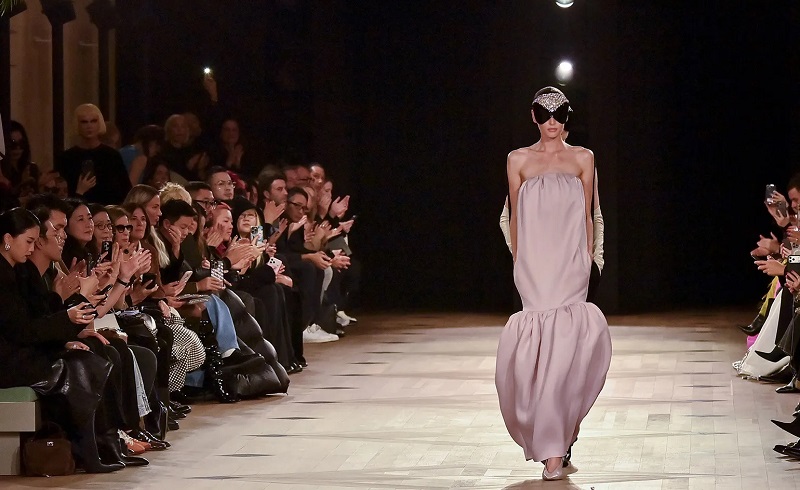
● Pier Paolo Piccioli at Balenciaga.
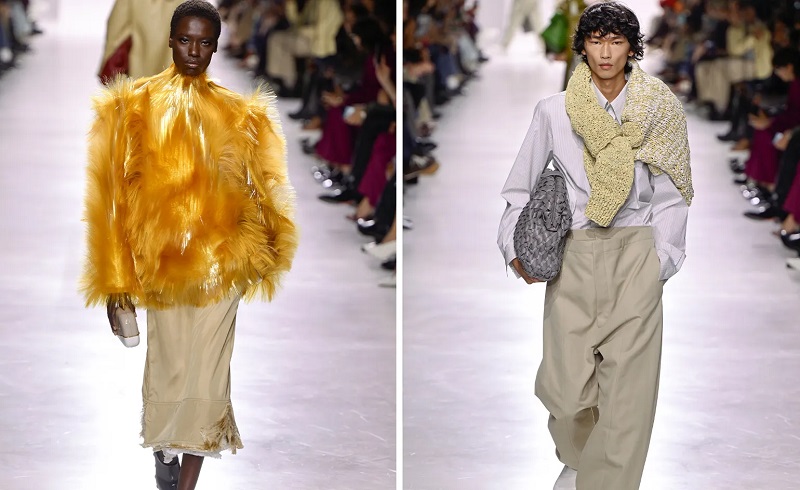
● Louise Trotter at Bottega Veneta.
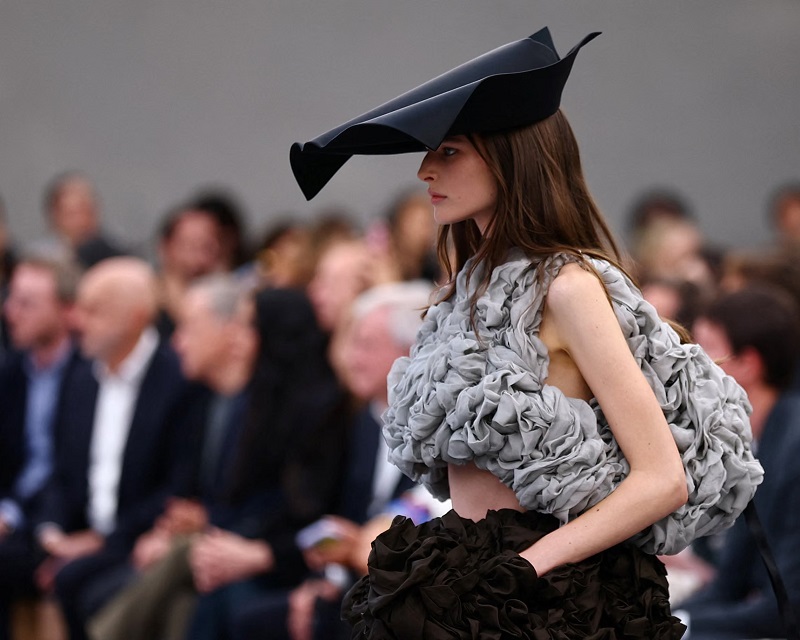
● J.W. Anderson at Dior. Anderson, who is new to Dior, explained that being "locked into history causes an implosion" and that "a change is inevitable".
One of the most notable debuts was Demna at Gucci, who did not waste time with grand speeches. Instead, he released his see-now-buy-now designs on Instagram and presented a film for a celebrity-filled audience in Milan, which was simultaneously made available to everyone online. His collection focused on modern reproductions of old Gucci bestsellers, a move that is already reportedly sending customers to stores and has caused Kering's stock price to rise sharply on the stock market.
Beyond the new designers, the season was also characterized by a democratization of fashion. This was seen in new formats and innovations, with designers and critics alike pushing back against the industry's elitist tendencies. For example, Glenn Martens, who is a designer for Diesel and Maison Margiela, distributed his Diesel collection throughout Milan, with models posing in plexiglass pods in public spaces like churches, bars, kiosks, and subway stations.
Another example of this shift was "La Watchparty," a public viewing of fashion shows created by social media fashion critic Elias Medini. This event brought back the collection discussions that had largely disappeared since the decline of bloggers around 2015. The audience at these events is different from those at the shows, consisting of young people more interested in the quality of the collection than in the looks of celebrities. This focus on the product and creative work, rather than on front-row attendees and "click-worthy" designs, gives cause for hope for the future of the industry.
The fashion industry has been grappling with a loss of glamour and sales, due in part to scandals involving poor quality, exploitative production, and questionable business dealings. There have also been accusations of "greedflation," where major brands have raised prices excessively without justification from innovative design or quality. This season's changes were seen as a necessary step to open a new chapter.
While many collections were successful, the debuts overshadowed other established brands' shows. It's difficult to recall the collections from Chloé, Dolce & Gabbana, Burberry, or Calvin Klein, as the sheer number of premieres commanded all the media attention. However, even the gossip surrounding this season—like Heidi Klum appearing as a bride at Vivienne Westwood's show or kitchen aprons becoming a trend at Miu Miu—indicates that something is changing in fashion.
This fashion week season saw a turning point in the industry, one that hopefully will continue to evolve in the coming years. The focus is returning to the product and collections, proving that fashion can once again captivate an audience. From this perspective, this season may indeed have been the "fashion week of the decade".
Max Easton has been named the new Chief Executive Officer of Smartex.
Easton's appointment follows two years during which he worked closely with fashion brands, demonstrating exceptional strength and leadership in executing the company's core strategic initiatives. He is now tasked with leading Smartex to its next stage of growth and strengthening the company's position as a key force shaping the future of the global textile and fashion industry.
A leader in applying AI to manufacturing, Smartex is expected to continue its aggressive expansion of technology adoption under Easton's direction. The company has been working in close coordination with its leadership team, board members, and investors to ensure a seamless transition. This focus remains firmly on executing its mission to transform the textile industry by implementing advanced technologies to bring transparency and efficiency to every step of textile manufacturing; pioneering solutions that dramatically reduce material waste in production and providing brands and consumers with verifiable data on their supply chains.
Easton is anticipated to leverage Smartex's patented real-time quality control and fabric defect detection systems to accelerate the push for a more sustainable and technologically advanced sector. His experience in operationalizing strategy with fashion brands is seen as critical to scaling the company's solutions globally.
British Wool’s recent sale saw the most intense level of competition in the last decade. All of British Wool’s main buyers were active, with UK, European and Chinese-focussed buyers competing to secure wool supplies. All core types traded significantly higher, with the main grades of carpet wool trading close to 20 per cent higher towards the end of the catalogue.
Prices in the sale on the 7thof October increased by 14.2 per cent over the mid-September sale. Over the month the prices achieved in the British Wescool auctions have increased by 22.5 per cent. The trend mirrors the price rises that have been seen in New Zealand with global demand for quality cross bred wools outstripping supplies.
The average sale price achieved on behalf of British Wool’s members was £1.18 per kg, a marked increase over the average sale price for the 2024 season. Sale prices last season averaged £1.00 per kg.
Andrew Hogley, CEO, British Wool, says, following some very positive conversations with the trade, the sales team is confident the strong demand will continue throughout the selling season.
Sales in New Zealand over the last few weeks have also been very competitive with global market demand for quality cross-bred wools outstripping supply, he adds.
This season’s wool is also generally of a higher quality than last season’s wool. The dry spring and summer resulted in whiter wool this season with more of the clip being classed as a No. 1 grade.
Test results for new season wool continue to be significantly better than last year for colour, and British Wool continues to produce a greater proportion of No.1 grades in the core types, notes Hogley.
British Wool has received a large quantity of wool from new and returning members this season, but the overall volume handled to date is running around 2 per cent to 3 per cent below last year.
Improved prices in the 2024 season encouraged many farmers who had been holding onto their wool, or using it on-farm, to present it for sale this year, adds Hogley.
As a co-operative British Wool seeks to maximise the returns for all sheep farmers. With prices having shown a further improvement over recent weeks, the organization encourages any members who still have wool on farm to send it in before the winter.
Based in Bradford, British Wool is owned by approximately 30,000 sheep farmers in the UK. It collects, grades, sells and promotes British Wool to the international wool textile industry for use in flooring, furnishings and apparel.



